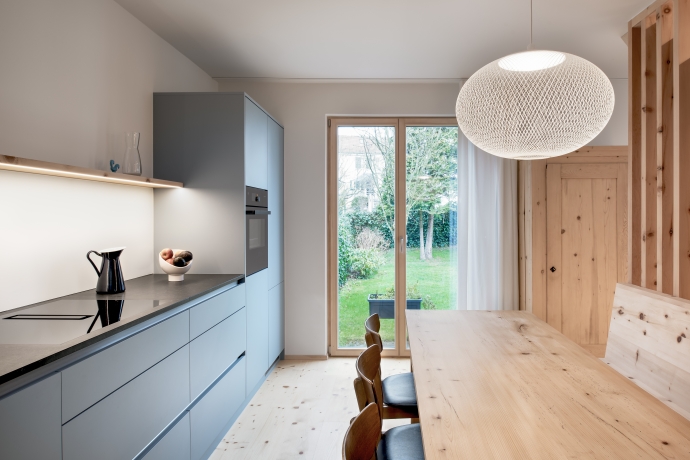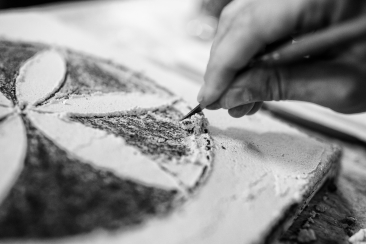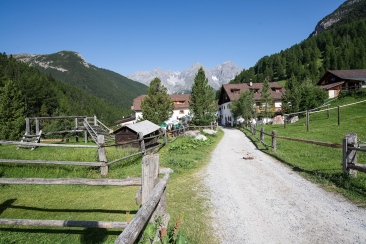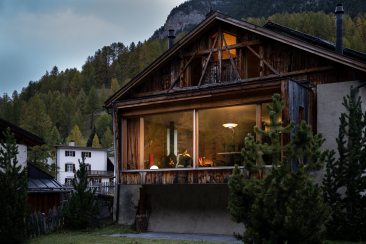Women build differently, men too
Architect Marisa Feuerstein
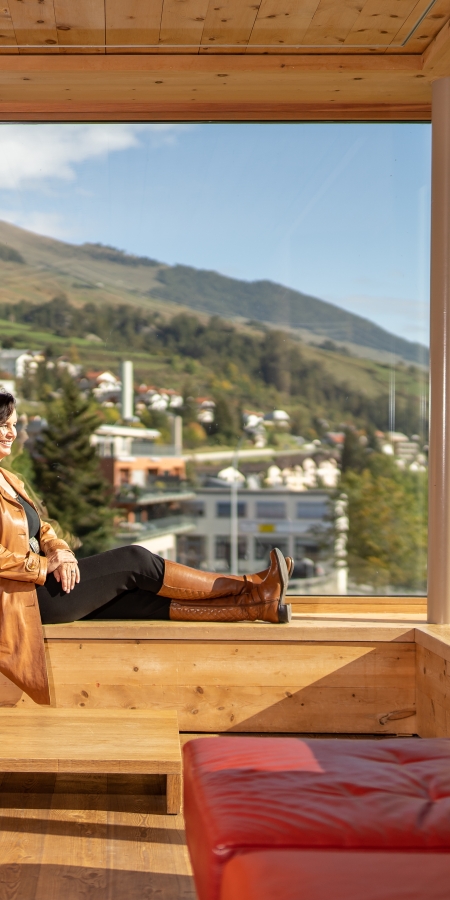
By Martina Stadler
The traditional villages with their fountains and sgraffito-decorated houses in the Lower Engadine are unique. No wonder, Maria Feuerstein goes into raptures when she explains how thoughtfully and practically the typical houses were built here. So it is then also a matter of honor that the architect and mother of a daughter does not just build somehow, but takes her architectural responsibility very seriously, both in the construction and in the conversion of houses and buildings.
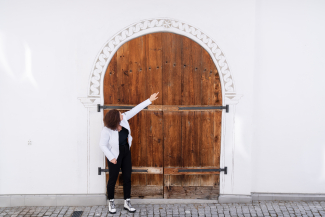
Cows as underfloor heating
Precisely because the growing seasons are shorter at this altitude and the harvest is therefore smaller, agricultural land in the Lower Engadine was and is a precious commodity. This led to the development of very compact villages rather than scattered settlements, in order to waste as little land as possible. As Marisa explains, every Engadine house is built according to the same, well thought-out scheme: "Through the large, round entrance door you enter the suler, a long paved or wooden planked corridor through which horse and cart could bring the hay to the hay barn located in the back. From the suler there are the living rooms: the stüva (parlor) with the only stove in the house, which was fired from the adjacent chadafö (kitchen), and the spensa (pantry). Above the stüva is the sleeping chamber, which is accessed by a steep ladder directly above the stove. Below the living quarters and the suler, the cattle were kept." With a wink, she adds that the cattle thus acted as floor heating, so to speak, for the living quarters.
For those who are now wondering how it was possible to drive through the gates, which are still almost two meters high, with horse and cart, Marisa has a plausible answer ready: "In contrast to the past, the roads today are up to one meter higher. That explains why the entrances seem relatively low." Incidentally, the Scuol native does not have a favorite architectural village - but she certainly considers Ardez and Tschlin to be among the jewels.
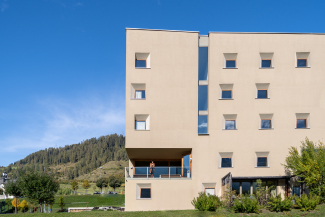
Unlike in the past, the streets today are up to one meter higher. This explains why the entrances seem relatively low.
The importance of the window seat
"It is also characteristic of Engadine houses that they have hardly any adjacent green spaces," Marisa explains. The only place to stay outside the house, which incidentally always faces the village square or the street, is a bench next to the entrance: "This is where you sat, watched the goings-on in the village and had a 'baderlada' with the neighbors, as a chat is called in Romansh. Benches instead of Facebook, in other words." But it wasn't just the care of the neighbors that was important, but also social control: "The Stüva was always oriented in such a way that you could watch what was going on in the village through the window in the warm living room."
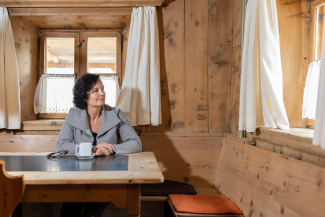
The Stüva was always oriented so that you could watch what was going on in the village through the window in the warm parlor.
A balancing act between tradition and modernity
Regardless of whether it's a conversion of a traditional Engadine house or a new building - for Marisa, it's elementary that the buildings fit into the local landscape. This does not mean that modern buildings should not be built. Because: "We no longer live in an agricultural society and people's needs have changed. A certain modern comfort has to be". But it does mean that even new buildings should be oriented to the volumetrics and proportions of the local building culture. It is also particularly important to the Scuol native to deal with the meaning of the symbols on the houses. Because it is not simply a matter of decoration: "So that there is no emptying of meaning, respect and knowledge of the meaning of the sgraffito on the facades is needed.
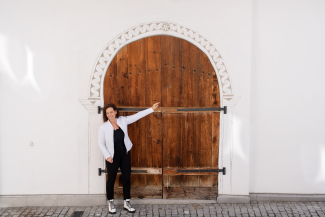
In order for there to be no emptying of meaning, respect and knowledge of the significance of the sgraffito on the facades is needed.
Symbiosis of external influences and internal functionality
According to Marisa, a building is architecturally successful when it is a symbiosis of external influences and internal functionality - as the Engadin house has been demonstrating for centuries. The architect refrains from jumping on every fashion trend: "That doesn't interest me. My buildings should be timelessly beautiful and still please people after 20 years." For this to succeed, the chemistry with the clientele must be right. Once they have "found each other" after the initial discussions, the work really starts: Marisa makes proposals, visualizes, calculates costs, prepares building permits and accompanies the projects through to completion. Holistic thinking is important to her: interior design and lighting are just as much a part of this as technical details. Project completions are always emotional for the entrepreneur: "When I have put a lot of my heart and soul into a project over a period of months, it also makes me a little sad to have to let it go. On days like that, I deliberately don't make any further appointments."
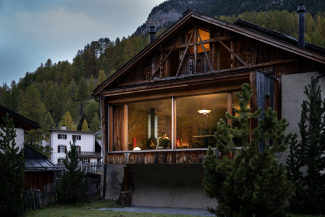
My buildings should be timelessly beautiful and still please minds after 20 years.
No systematic exclusion of men
The architect is supported almost exclusively by women. An unusual fact in the rather male-dominated construction industry. Marisa is certain: "Women build differently, and so do men." For her, "feminine" architecture shows itself in practical details that have been thought through for use. But also through softer materialization and colors. "It was not a conscious decision. The fact that today we are primarily convincing through women's power has turned out that way."
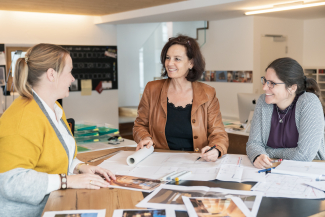
It was not a conscious decision. The fact that today we are primarily convincing through women's power has come about as a result.
Pushing off the horns on the construction site
The fact that Marisa took over her father's architecture firm at the age of 30 is due to the burst real estate bubble and rare job offers after graduation. Instead of pursuing a career in Boston and Toronto, she returned - supposedly temporarily - to the Lower Engadine. Her father sent her to construction sites a lot so that she could get to know the practical side. Looking back, she is grateful for this: "I understand the craft and am able to question things and discuss them at eye level. As a perfectionist, I do that to the end." Instead of the big wide world, Marisa has found happiness in the tranquil but architecturally no less exciting Lower Engadine.
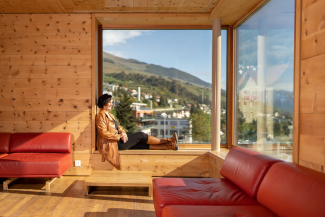
I understand the craft and am able to question things and discuss them at eye level. As a perfectionist, I do this to the end.
Charge the battery without cell phone
Together with her brother, Marisa Feuerstein owns a cozy hideaway in S-charl, a hamlet about 15 km south of Scuol. Here, in the barn she converted herself, she recharges her batteries for new challenges - without satellite reception or the Internet. She prefers the wood-burning stove for cooking and enjoys how much peace and deceleration these stays in S-charl bring her. But things are not quite so slowed down: together with her partner, the sporty woman loves to go on bike tours, for example through the God da Tamangur, the highest Swiss stone pine forest in Europe. Perhaps it is precisely this closeness to nature that makes Marisa dream of a season as a hut warden.
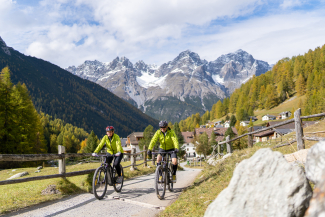
Text: Martina Stadler
Pictures: Dominik Täuber
Objects and projects by Marisa Feuerstein
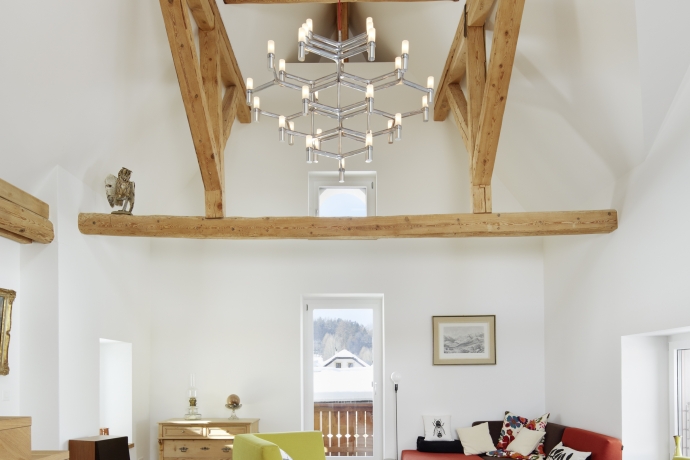
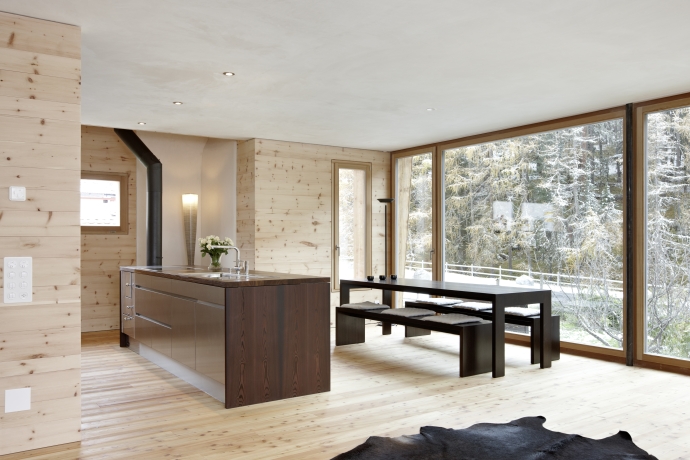
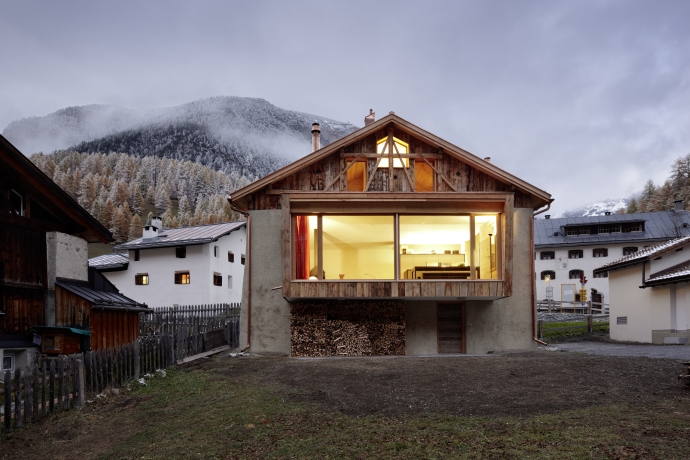
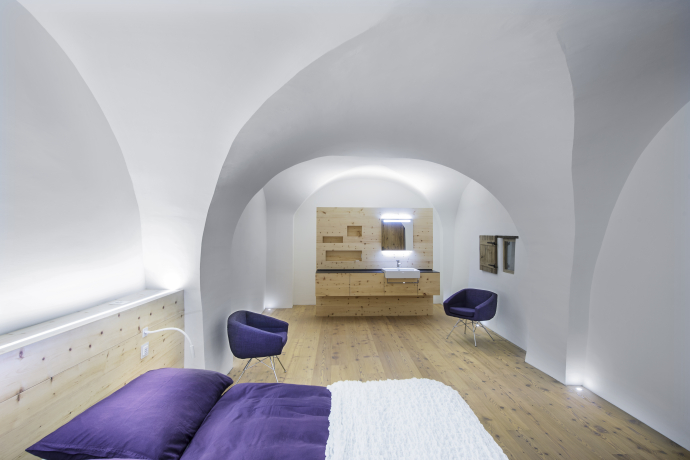
Show all 6 images
